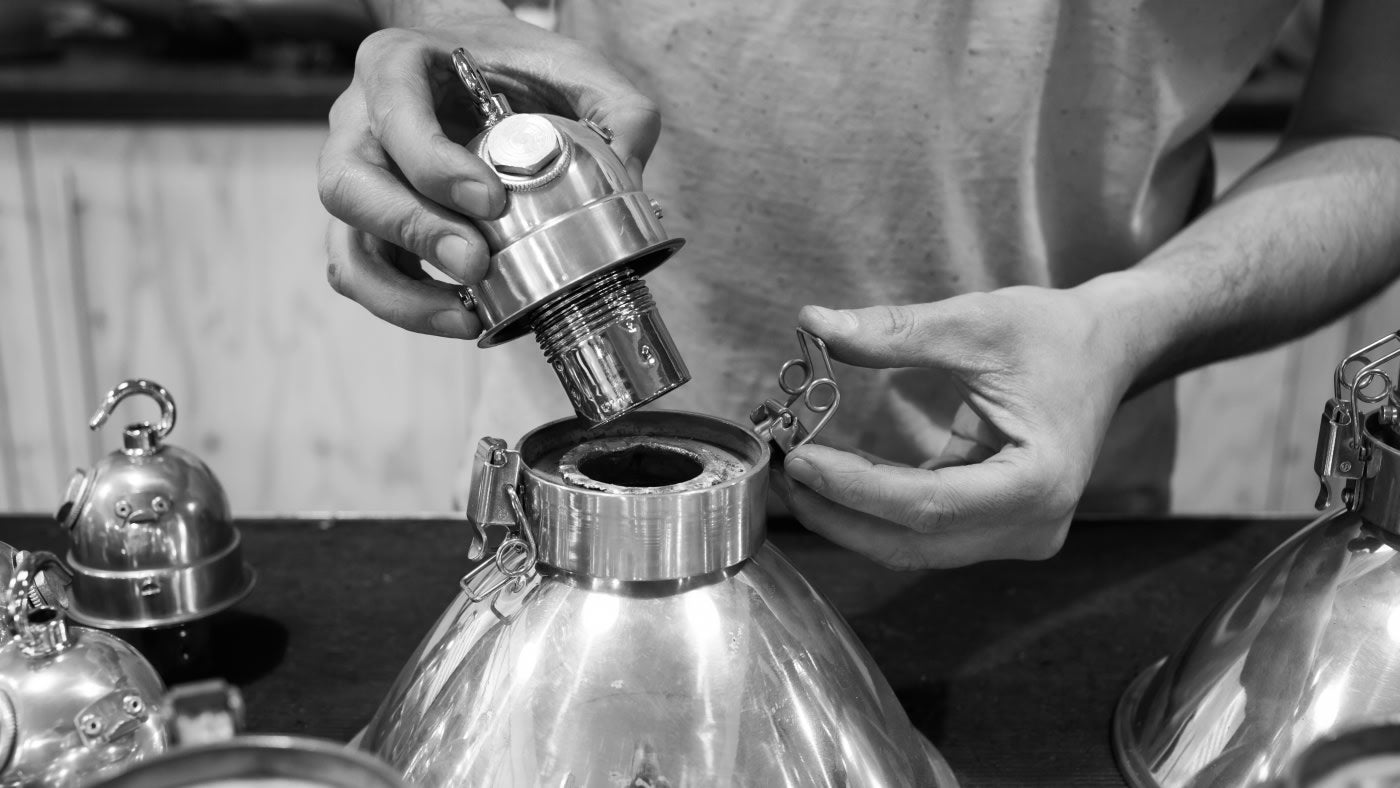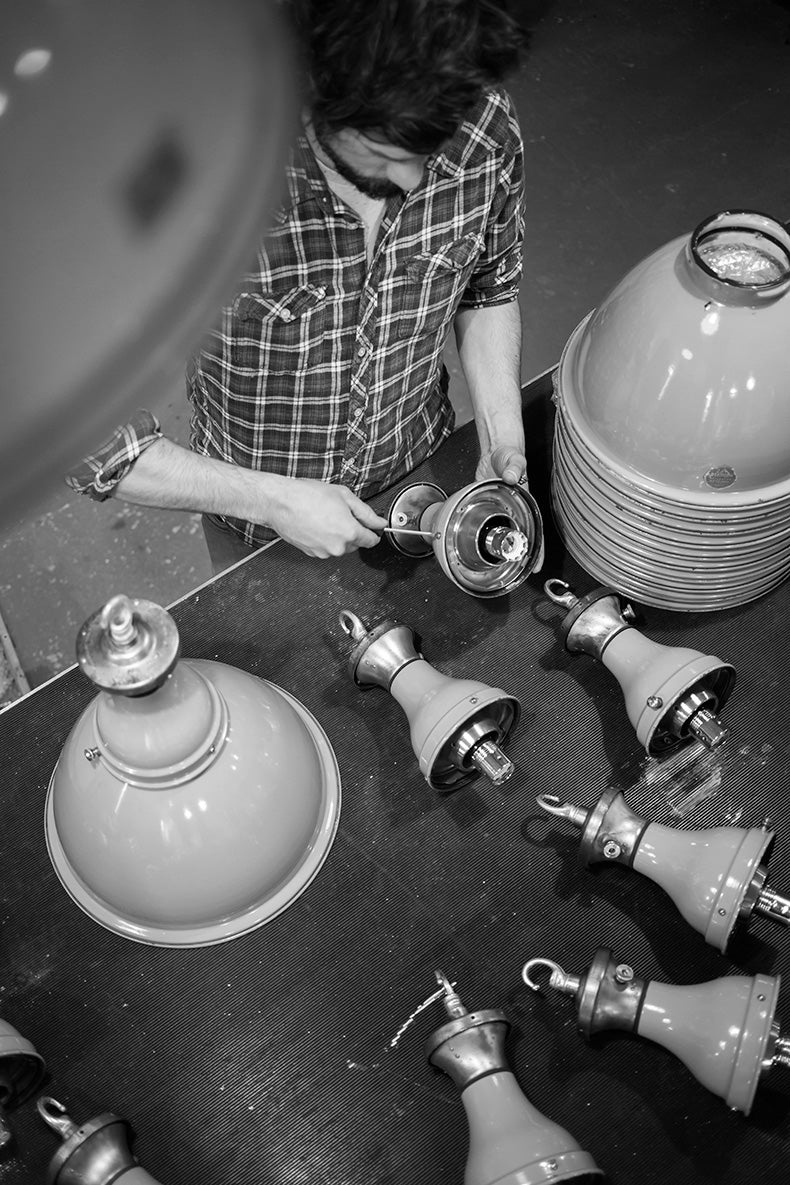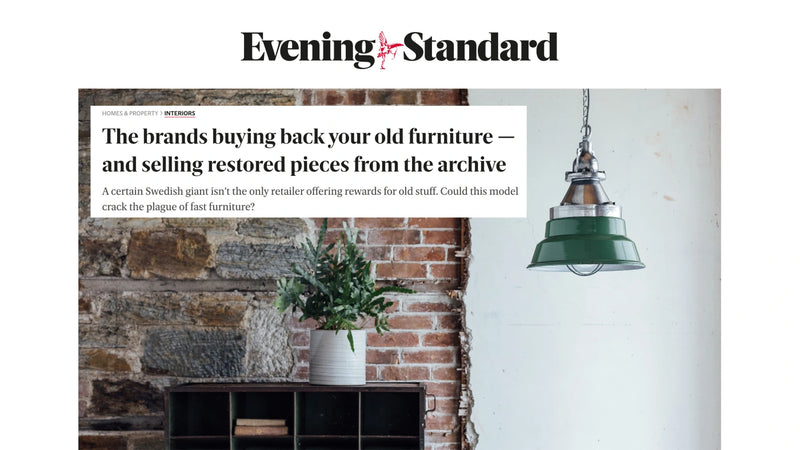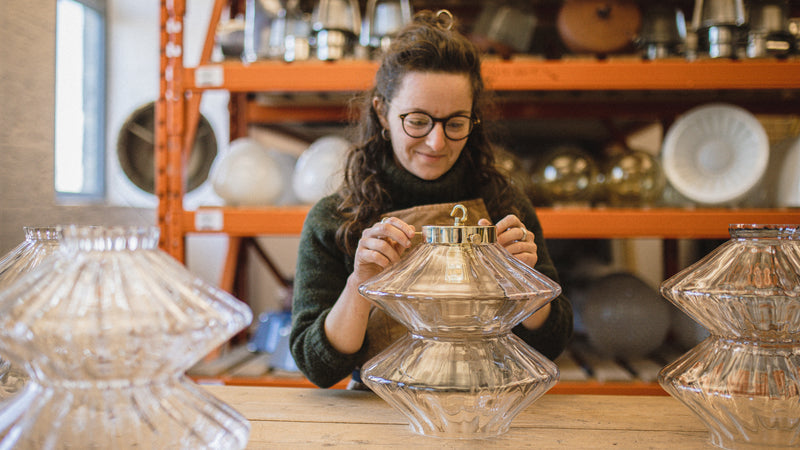
Right to repair: exploring mending and restoration
Do we have a right to repair the things we own? When something is broken and then restored, does it become more or less valuable? Are we changed by the things we mend? As more of us wake up to conscious consumerism, our panel discussion at Clerkenwell Design Week aimed to answer just that.
Design writer Katie Tregidden chaired the panel, comprising V&A Artist in Residence and Hackney Fixers co-organiser Bridget Harvey, Restoration Station volunteer Justin South, textiles artist Celia Pym, and skinflint’s very own Chris Miller. Here are some of the key insights…

There is a lot of complication and effort involved in restoring objects. Why bother?
‘By extending the lifespan of the vintage lights we restore we are reducing their environmental impact. The lights that we reclaim from the 1920s-1970s are extremely well designed and engineered, before the very idea of planned obsolescence. They have fallen out of use, not because they have failed, but because the buildings around them have failed.’ – Chris Miller, skinflint.
‘The people who come to Hackney Fixers either bring things they really, really love and have a deep emotional connection to, or things they really, really need.’ – Bridget Harvey, V&A Artist in Residence and Hackney Fixers co-organiser.
‘Repair is not really about consuming or not consuming – it’s about keeping the things that make your life more pleasant in use.’ – Bridget Harvey, V&A Artist in Residence and Hackney Fixers co-organiser.
‘There’s a lot of evidence that shows that working with your hands is good for your wellbeing. I love how time feels different when I am repairing something – just that rhythm of being in it.’ – Celia Pym, textiles artist.
Why are the stories behind the objects we own or repair so important?
‘People often can’t believe that we have genuinely salvaged our lights – that they are original – so we purposefully leave the imperfections in and celebrate the heritage and history of the pieces.’ – Chris Miller, skinflint.
‘Restoring furniture with Restoration Station, and celebrating the life stories of those objects, has been an important part of my recovery from drug and alcohol addiction. It says that you don’t have to forget where you came from, that even as you move past an area of your life, it is still part of your recovery, part of your story.’ – Justin South, Restoration Station.
‘I have mended some things and been extremely moved to discover previous repairs – there’s a wonderful layering of stories in mended objects.’ – Celia Pym, textiles artist.
‘I love that Bridget said a big part of her job at Hackey Fixers is getting big crumbs out of toasters, because the thing is, if you’re stuck, you’re stuck! There is something lovely about showing someone else your problem – sometimes people show me things they don’t want mended, they just want to share them and their stories with me.’ – Celia Pym, textiles artist.

What does it mean to repair, mend or restore? And what does it feel like?
‘You can go too far with a repair. But what I have grown to love is the powerful feeling that even if I break something or take it too far, I still have the capacity to do something else, because it was broken and damaged in the first place – there’s a real freedom in that.’ – Celia Pym, textiles artist.
‘Whether you are a maker or a mender; you put something of yourself into the objects because you care.’ – Bridget Harvey, V&A Artist in Residence and Hackney Fixers co-organiser.
‘In museum conservation, there is now more care for the narrative of the object, rather than just the object as it was when it was made – for example museums might not staple broken ceramics together anymore, but neither do they remove historic staples, because they want to keep those stories – the staples help us understand the history of the piece.’ – Bridget Harvey, V&A Artist in Residence and Hackney Fixers co-organiser.
‘In ten years, we have salvaged and restored about 50,000 lights and we now only take lights from the 1920s until about the 1970s, because after that value engineering and planned obsolescence had come into play, and we are physically unable to restore these pieces. That is a real shame and something I feel very strongly against.’ – Chris Miller, skinflint.
‘It’s the same with mid-century furniture – any earlier and it’s very complex and intricate and would require specialist skills to restore, and any later you start getting veneers and if a veneer is too thin, you can’t really sand it and it becomes very difficult to repair.’ – Justin South, Restoration Station.

Let’s talk about the rise of the ‘visible mending’ movement...
‘I think the notion of visible mending is quite a catchy idea, but I don’t fully trust it – it feels too obvious. The point isn’t the visibility for me. Creatively, it’s exciting to play with colour, but not everybody is not comfortable with a mend being visible and I would never push someone to use contrasting yarns.’ – Celia Pym, textiles artist.
‘Visible mending can be a really good statement of intent, or of the environmentalism or politics of mending…but if you are mending someone’s work clothes, for example, they might not want bright yellow yarn on their smart black suit jacket. It’s an aesthetic choice. I have a lot of visibly mended coats, and there are days I don’t even want to wear them myself, days when I just want to blend into the background.’ – Bridget Harvey, V&A Artist in Residence and Hackney Fixers co-organiser.
‘As a charity, the aesthetic of visible mending is less of a concern – it’s more often about making use of what we have and making a feature of things that don’t match.’ – Justin South, Restoration Station.
‘I am a little cautious about trends – there is a danger that people only buy into the aesthetic and not the purpose and start mending things that aren’t damaged, or purposefully aging new products and that seems wrong somehow.’ – Chris Miller, skinflint.
‘The trend for visible mending is in danger of romanticising repair, but a lot of mending is not romantic at all – it is often more to do with austerity; purely pragmatic.’ – Bridget Harvey, V&A Artist in Residence and Hackney Fixers co-organiser.
Final words on restoration and repair...
‘There is no point in mending something you never liked in the first place because you won’t like it anymore after it is fixed. So, don’t worry about getting rid of things you don’t love. It’s okay to buy new things too, just try to only buy things you really love or need.’ – Celia Pym, textiles artist.
You might also like
In conversation with Nick & Stefan at Dodds & Shute
Ahead of The Retreat collection launch, we catch up with Nick and Stefan, the duo striving to bring sustainability to the forefront of the industry.
skinflint Full Circle buy-back scheme makes the Evening Standard top 10
Drum roll please...our buy-back scheme Full Circle has been included in the Evening Standard’s 10 of the best interior buy-back and repair schemes alongside household names such as Ikea and John Lewis!
B CorpDay in the life: Rosy Seal, prop hire engineer
Speaking to the British Film Designer's Guild, skinflint's workshop team member Rosy reveals what goes on behind the scenes restoring our original vintage lights ready for prop hire for TV and film.
Prop Hire







